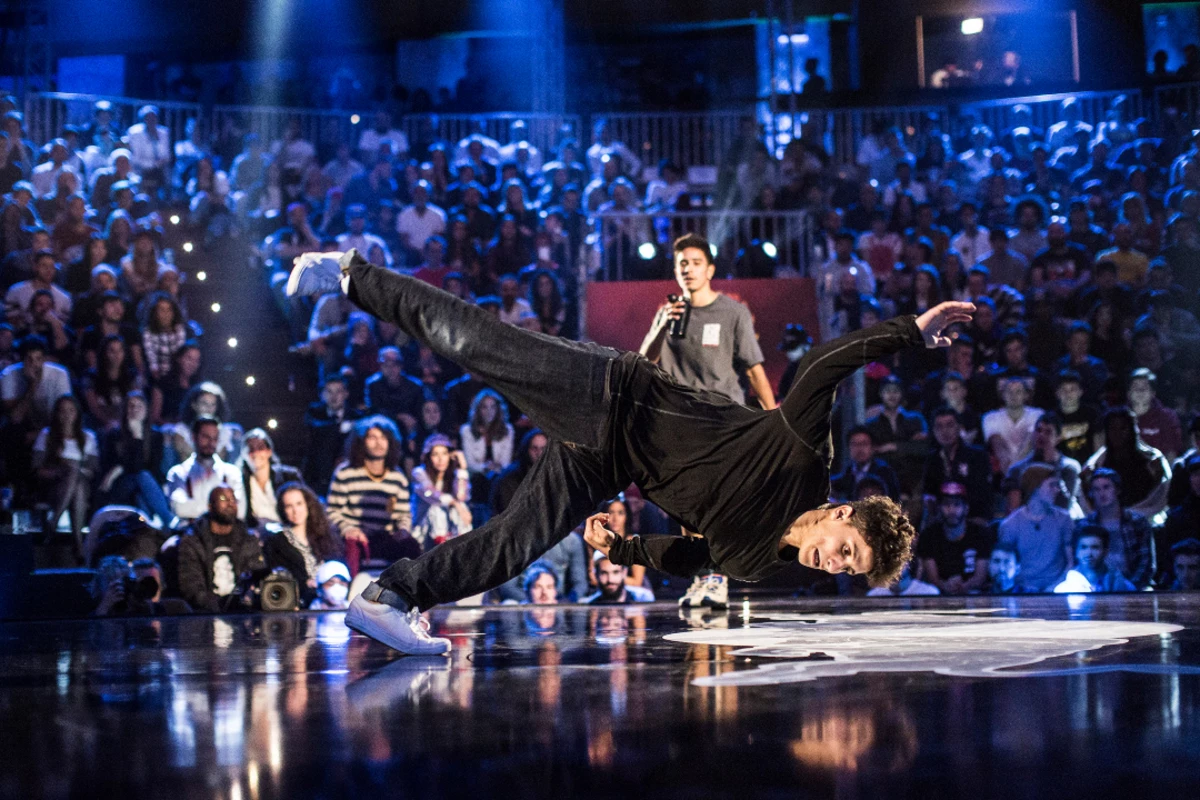History and Evolution of Breakdancing: Break Dancing

Breakdancing, a vibrant and energetic dance form, emerged from the streets of the Bronx, New York City, in the 1970s. This captivating dance style, deeply rooted in the cultural landscape of hip hop, has evolved significantly over the years, reflecting the changing times and influences that have shaped its unique character.
Origins and Influences
Breakdancing’s roots lie in the melting pot of the Bronx, where diverse communities and cultural expressions collided. It emerged as a form of self-expression and a means of social interaction, influenced by the burgeoning hip hop culture of the era. Funk music, with its infectious rhythms and grooves, provided the sonic backdrop for breakdancing’s development, inspiring its dynamic movements and improvisational nature. Breakdancing absorbed elements from various street dance styles, including uprock, popping, and locking, incorporating their unique techniques and aesthetics into its repertoire.
Breakdancing Styles
Breakdancing encompasses a diverse range of styles, each with its own distinct characteristics and techniques.
Top Rock
Top rock, as the name suggests, is the foundation of breakdancing, involving intricate footwork patterns and dynamic upper body movements. This style is often used as an introduction to a breakdancing routine, showcasing the dancer’s rhythm, coordination, and creativity.
Footwork
Footwork is a fundamental element of breakdancing, focusing on rapid and intricate foot movements that create a mesmerizing visual display. This style involves complex footwork patterns, such as “toprock” and “downrock,” often accompanied by intricate body isolations.
Power Moves
Power moves are the most visually striking and physically demanding aspects of breakdancing. These acrobatic maneuvers involve intricate spins, flips, and rotations that require significant strength, flexibility, and control. Power moves are a testament to the dancers’ athleticism and skill, captivating audiences with their daring and impressive displays.
Freezes
Freezes are a crucial component of breakdancing, allowing dancers to hold a visually arresting pose for a brief period, showcasing their balance, flexibility, and creativity. Freezes often involve unique and dynamic positions, showcasing the dancers’ ability to control their bodies in challenging and unconventional ways.
Timeline of Breakdancing, Break dancing
Breakdancing’s evolution can be traced through a series of key milestones and influential figures.
- 1970s: Breakdancing emerges in the Bronx, New York City, as a street dance form influenced by funk music, hip hop culture, and other street dance styles.
- 1970s-1980s: The Rock Steady Crew, a legendary breakdancing crew, emerges and pioneers the development of breakdancing techniques, influencing the evolution of the dance style.
- 1980s: Breakdancing gains mainstream popularity, fueled by the release of the film “Breakin'” and the growing popularity of hip hop culture.
- 1980s-1990s: Breakdancing evolves further, incorporating new techniques and styles, as dancers from different backgrounds and communities contribute to its development.
- 1990s-Present: Breakdancing continues to evolve and adapt, influenced by contemporary dance trends, technological advancements, and the emergence of new generations of dancers.
Breakdancing Techniques and Styles

Breakdancing, also known as B-boying/B-girling, is a street dance style that emerged in the 1970s in the Bronx, New York City. It’s a vibrant and energetic dance form that combines athleticism, creativity, and musicality. Breakdancing encompasses a wide range of techniques, styles, and expressions, making it a captivating and challenging dance form to learn and master.
Fundamental Techniques
Breakdancing involves a set of fundamental techniques that form the foundation for more advanced moves and styles. These techniques are essential for developing control, coordination, and strength.
- Top Rock: Top rock refers to the rhythmic footwork and body movements performed while standing. It serves as an introduction to a breakdancing routine and can be a platform for showcasing individual style and creativity. Top rock involves a variety of steps, including the “running man,” “walk it out,” and “the grapevine,” among others.
- Footwork: Footwork involves intricate and rapid foot movements performed on the ground, often in a circular or linear pattern. Footwork techniques include “six steps,” “baby freeze,” and “the swipe,” among others. Footwork requires agility, precision, and a strong understanding of rhythm.
- Power Moves: Power moves are dynamic and acrobatic movements that involve spinning, flipping, and other physically demanding techniques. These moves require significant strength, flexibility, and control. Some popular power moves include the “windmill,” “flare,” “headspin,” and “airtrack.”
- Freezes: Freezes are static poses that dancers hold at the end of a power move or footwork sequence. Freezes require balance, strength, and creative positioning. Some popular freezes include the “chair freeze,” “handstand freeze,” and “turtle freeze.”
Breakdancing Styles
Breakdancing has evolved into various distinct styles, each with its own unique characteristics and signature moves. Here is a table showcasing some of the prominent breakdancing styles:
| Style | Defining Characteristics | Notable Practitioners |
|---|---|---|
| B-Boying | Emphasis on power moves, acrobatic techniques, and dynamic transitions. | Ken Swift, Crazy Legs, The Rock Steady Crew |
| B-Girling | Focus on fluidity, grace, and flexibility, incorporating elements of ballet and contemporary dance. | Baby Suki, Roxrite, Sista Souljah |
| Power Moves | Specializes in high-energy, acrobatic movements that require significant strength and agility. | Storm, T-Bone, Lilou |
| Footwork | Focuses on intricate and rapid footwork patterns, often with a circular or linear flow. | Casper, T-Bone, Hong 10 |
| Style (Top Rock) | Emphasizes rhythmic and expressive footwork while standing, showcasing individual creativity and personality. | The Rock Steady Crew, The Furious Five, The Magnificent Force |
Signature Breakdancing Moves
Breakdancing is renowned for its impressive and visually stunning moves. Here are a few signature moves with their execution steps and required physical skills:
Windmill
The windmill is a classic power move that involves spinning on one hand while keeping the other hand extended for balance. It requires upper body strength, core stability, and a strong sense of balance.
- Start by standing with your feet shoulder-width apart.
- Bend your knees slightly and place one hand on the ground in front of you.
- Use your other hand to push off the ground and launch yourself into a spin.
- As you spin, keep your extended arm straight and use your core muscles to maintain balance.
- Once you complete a full rotation, you can continue spinning or transition into another move.
Flare
The flare is another signature power move that involves kicking your legs up and over your head while spinning on your hands. It requires flexibility, core strength, and a high level of coordination.
- Start in a handstand position with your feet together.
- Use your core muscles to lift one leg up and over your head.
- As you lift your leg, kick your other leg up and over your head, keeping your core engaged and your body straight.
- Once both legs are over your head, continue spinning on your hands, keeping your body in a straight line.
Headspin
The headspin involves spinning on your head while maintaining balance and stability. It requires strong neck muscles, a good sense of balance, and a strong core.
- Start by kneeling on the ground with your hands in front of you, palms flat on the floor.
- Slowly lower your head to the ground, keeping your neck relaxed and your spine straight.
- Use your hands to push off the ground and start spinning, keeping your head and neck stable.
Importance of Improvisation, Creativity, and Personal Expression
Breakdancing is not just about mastering techniques and executing moves. It’s also about improvisation, creativity, and personal expression. Breakdancers are encouraged to experiment with different moves, styles, and rhythms, creating their own unique interpretations and expressions. This freedom of expression is what makes breakdancing such a captivating and dynamic art form.
